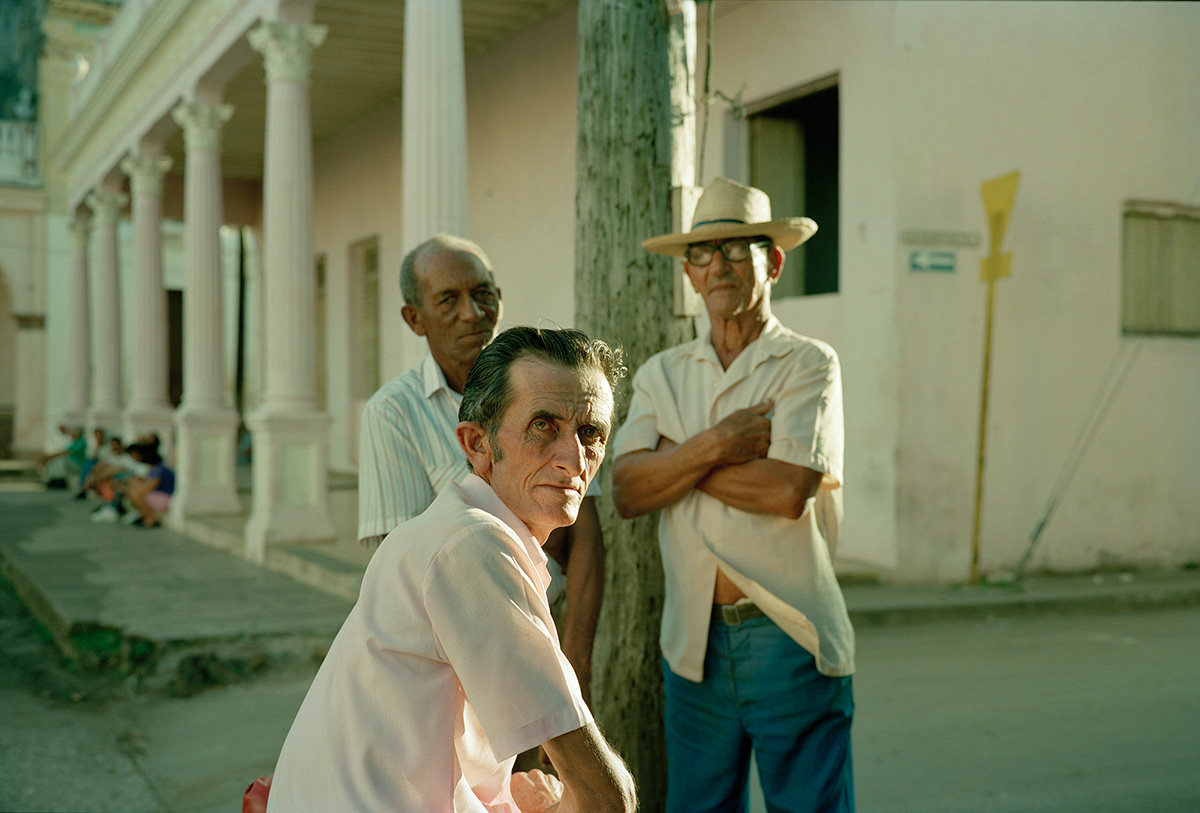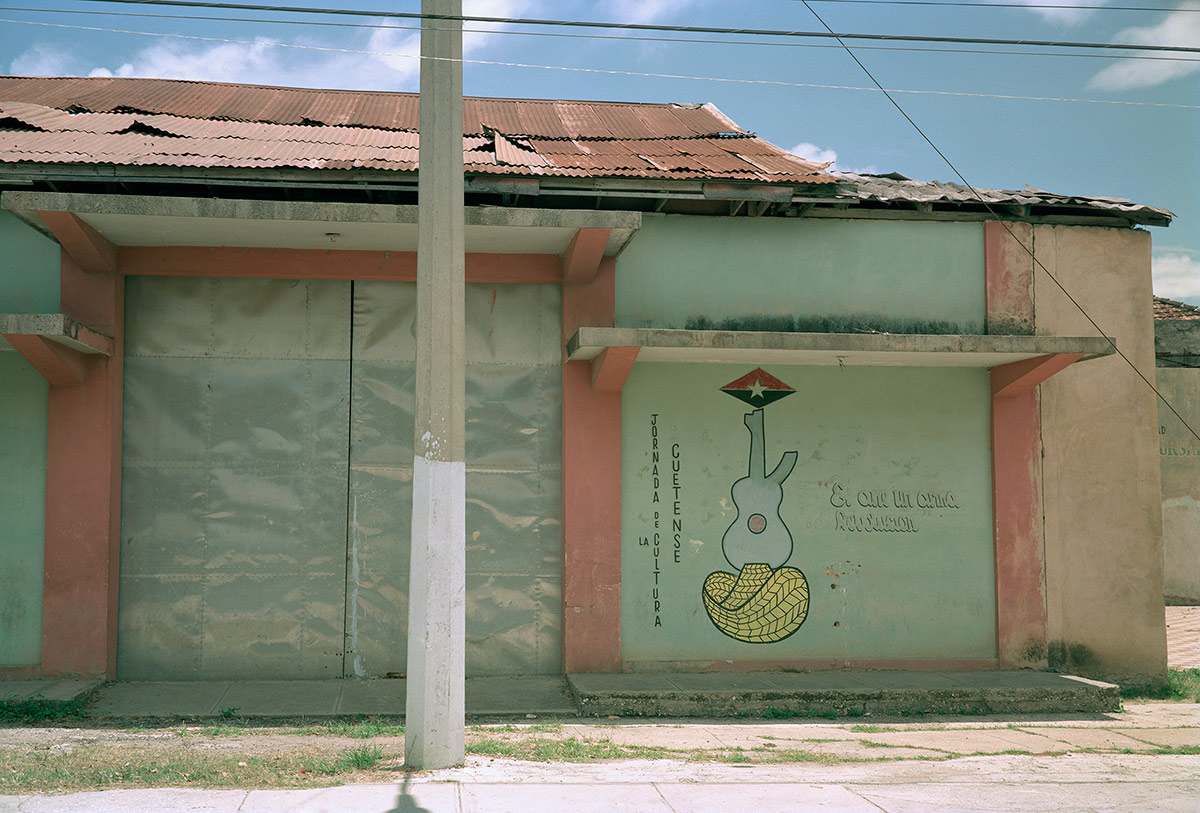The Cuba Archive by Tria Giovan
A rare look at the country’s day-to-day during the ’90s, captured by the photographer over 11 visits

NYC- and Sag Harbor-based photographer Tria Giovan traveled to Cuba 11 times during the severe economic depression of the ’90s, snapping over 25,000 images with a sense of urgency. Her photos reveal glimpses of perseverance and enduring spirit in one of the most unique places in the world, but the decades of isolation were bound to end. With President Obama announcing a restoration of full relations with Cuba almost exactly a year agothough the trade embargo has yet to be liftedit marks a new era for the country. And 25 years after her first trip to Cuba, Giovan has revisited her original negatives to create a digital archive of over 450 images (many of which have never been seen), giving the public a look back in time as Cuba steps into a future fueled with much more hope. These intimate and powerful photographs in the Cuba Archive are ones that speak for themselves, but we couldn’t help asking Giovan a few questions to learn more about her body of work.

What specifically drew you to Cuba for your first trip, and what kept you coming back 11 more times?
I first traveled to Cuba in 1990. So close and yet so inaccessible, a rarity in the modern travel world, its renowned mystique was intriguing and appealing.The architectural legacy of a sultry, decaying Havana, the cinematic landscape of the villages and countryside, and the peoples elegance, hospitality and accessibility all combined for a compelling introduction. Having grown up in the Caribbean, there was a pull to parts familiar, as well as a desire to understand this enigmatic and isolated country.

I had been an adventurous and intrepid traveler since my teens, and always had an interest in going to Cuba, in part because of the travel restrictions. My first trip was an organized trip for photographers as a cultural exchange through the Center for Cuban Studies, one of the few US-based organizations with cultural ties to Cuba at the time. After that initial trip I went as a researcherdoing photography researchas opposed to a journalist (which [was more] difficult to obtain visas from both countries).
A bit of a loophole, but it allowed for relatively easy access and unrestricted movement within the country. I would join the select few Cubans and Cuban-Americans who were allowed to travel on the weekly charter flights from Miami to Havana being operated by a US-based company, Marazul tours. All your hotel expenses had to be prepaid to the company in the US in keeping with the laws of the embargo, which does not permit spending money or conducting business with Cuba.

It became very obvious, fairly quickly, that its isolation had persevered, as if in amber, an integrity of spirit and topography that would not last forever.
Immersing myself in Cubas history, literature, arts and politics, while exploring the island, developing relationships and witnessing extraordinary change was stimulating and enlighteningas well as disheartening and disturbing. Against intimate and often melancholy backdrops, the subtleties and layered complexities of day-to-day Cuba were visually inspiring and compelling. It became very obvious, fairly quickly, that its isolation had persevered, as if in amber, an integrity of spirit and topography that would not last forever. With an urgency to document before the inevitable changes, I returned for 11 month-long trips, traversing the island numerous times, and making over 25,000 images.

From your experience, how has Cuba changed over your visits?
The majority of this archive was shot between 1990 and 1996. During my last trip to Cuba in 2000, it was apparent the country was coming out of the decade-long Perodo Especial (special period) when severe shortages and economic crises were the norm. Foreign investment and expansion of the tourism industry, which had begun in the mid nineties, post Soviet withdrawal of economic subsidies, had taken a firm hold.Though contrary to the party line against capitalism, Spain, Mexico and Canada, among others, were investing in Cuba’s infrastructure, building resorts, and engaging in joint business ventures. Foreign tourists were welcomed with increasing numbers, even though the tight restrictions for Cubans to travel outside the country remained firmly in place.

Amidst all the complex maneuverings of governments the country has continued on its independent and singular course. While Cubas topography has inevitably changed over the decades, it is apparent that the country’s distinctive and robust identity is still intact as made evident by its ability to persevere and retain its autonomy. I have not been back in over 15 years, and have not witnessed first-hand how the recent changes in policies have effected change in the daily lives of Cubans, or on the physical landscape of the country. It is with much affection, respect and sincerity that I wish them well on this latest leg of their journey.

Why was it important for you to create a digital archive?
It has been 25 years since I began photographing in Cuba, all with medium format color negative film. The hi-res digital scans preserve the photographs, as deterioration of the negatives is inevitable. With a clarity that only time can impart, I delved back into a wealth of images, and made a new and comprehensive edit, scanning over 1000 negatives.I’ve captured and chronicled the face of Cuba in a specific period of its long, storied, and fascinating history.

Already it seems that many of the images are visual vestiges of a past era. This record, exhaustive and intimate, is a testament to the spirit and integrity of a strong, resilient, and complex country and its people. As a digital archive, the body of work now has a new life, and plans for a second book, and future exhibitions are in the works.
View the complete Cuba Archive online at Tria Giovan’s website. Print information is available upon request.
All images courtesy of and copyright Tria Giovan












